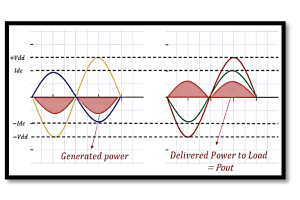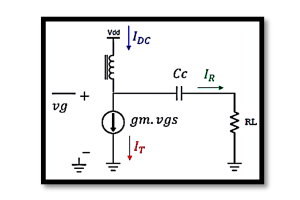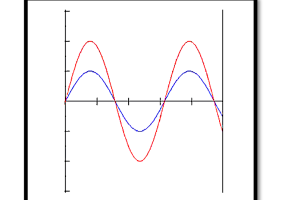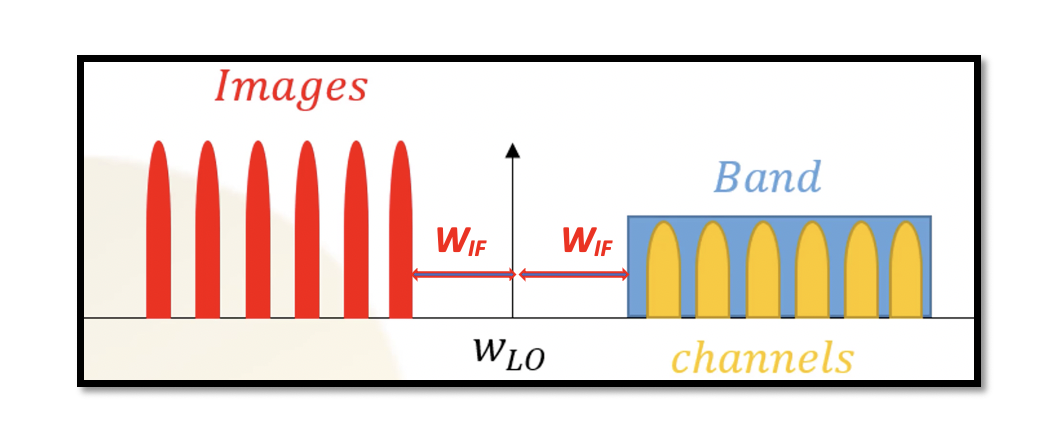
How to Remove the Image Signal in Heterodyne Receiver?
As discussed in the section ‘Image problem in the heterodyne receiver’, that image signal’s frequency is quite close to the desired band, but it is outside the band. So to remove the image signal from the desired channel, a filter can be used. This filter is called the image rejection bandpass filter. But now, since we are working in RF frequency this filter will not have high Q. So as shown in the below figure, the bandpass filter can be used to select the desired channel and attenuate the image signal.
Why is the image reject filter placed after LNA?
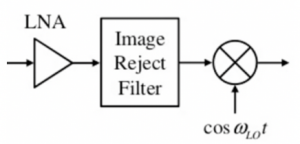
This image rejects filter is placed after the Low Noise Amplifier (LNA). The reason for putting it after LNA is, filter contributes to noise, and if placed before LNA, it will add noise which will again get amplified, contributing to the receiver’s noise figure. As we know, in cascaded stages, the noise contribution from stage 1 is more than other stages. The noise from the upcoming stages will be divided by the gain of the first stage, and it will come to the beginning of the system which is a receiver here.
If the image rejection filter is placed before LNA, the noise at the receiver’s input will increase. As we know, the received signal from the antenna is weak due to attenuation from the environment, and it will need amplification and degrade the Signal to Noise Ratio (SNR). If the image rejection filter is placed after the LNA, the noise of the image reject filter is divided by the gain of LNA. Therefore, by doing so, we will have less contribution of noise from the image reject filter.
Can the Bandpass filter do image rejection?
The issue in designing filters is they have a finite absolute bandwidth. The image signal is outside of the band; however, it is quite close to the band. Yes, a bandpass filter can do this filtering, but since its in-band loss proves critical, its selectivity and out-of-band attenuation are not enough to remove the image signal. It means BPF can attenuate the image to some extent; however, it cannot completely get rid of the image signal. BPF has low Q; hence, it does attenuate to some extent, but it will not be enough.
When the incoming signal frequency is converted to the intermediate frequency, we reduce the bandwidth and improve the Signal to Noise Ratio (SNR). Therefore, lower the frequency better the performance.
Is an image rejection filter required if there is no image signal?
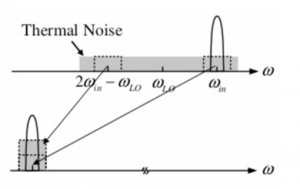
Yes, an image rejection filter is still required even when we have cases where there won’t be any image signal within our desired band. The reason is we have thermal noise in the spectrum. As shown in the below figure, win in our desired channel, and the frequency of the image is at 2win-wLO, but if we don’t have an image, however, we do have thermal noise for which the PSD is constant at all frequencies. If an image reject filter is not used, this thermal noise gets mixed with wLO, and the noise within the image frequency will be translated to wIF along with the noise in win. So now we have double noise from both channel and image frequency. Therefore, the SNR will get degraded in IF. Hence, using an image rejection filter will shape and suppress the noise.

Learn more about this topic by taking the complete course ‘RF System Design of Receivers, Transmitters & Transceivers – RAHRF409’.
Watch the course videos for more detailed understanding. Also checkout other courses on RF system and IC design on https://rahsoft.com/courses/.
Rahsoft also provides a certificate on Radio Frequency. All the courses offer step by step approach.

